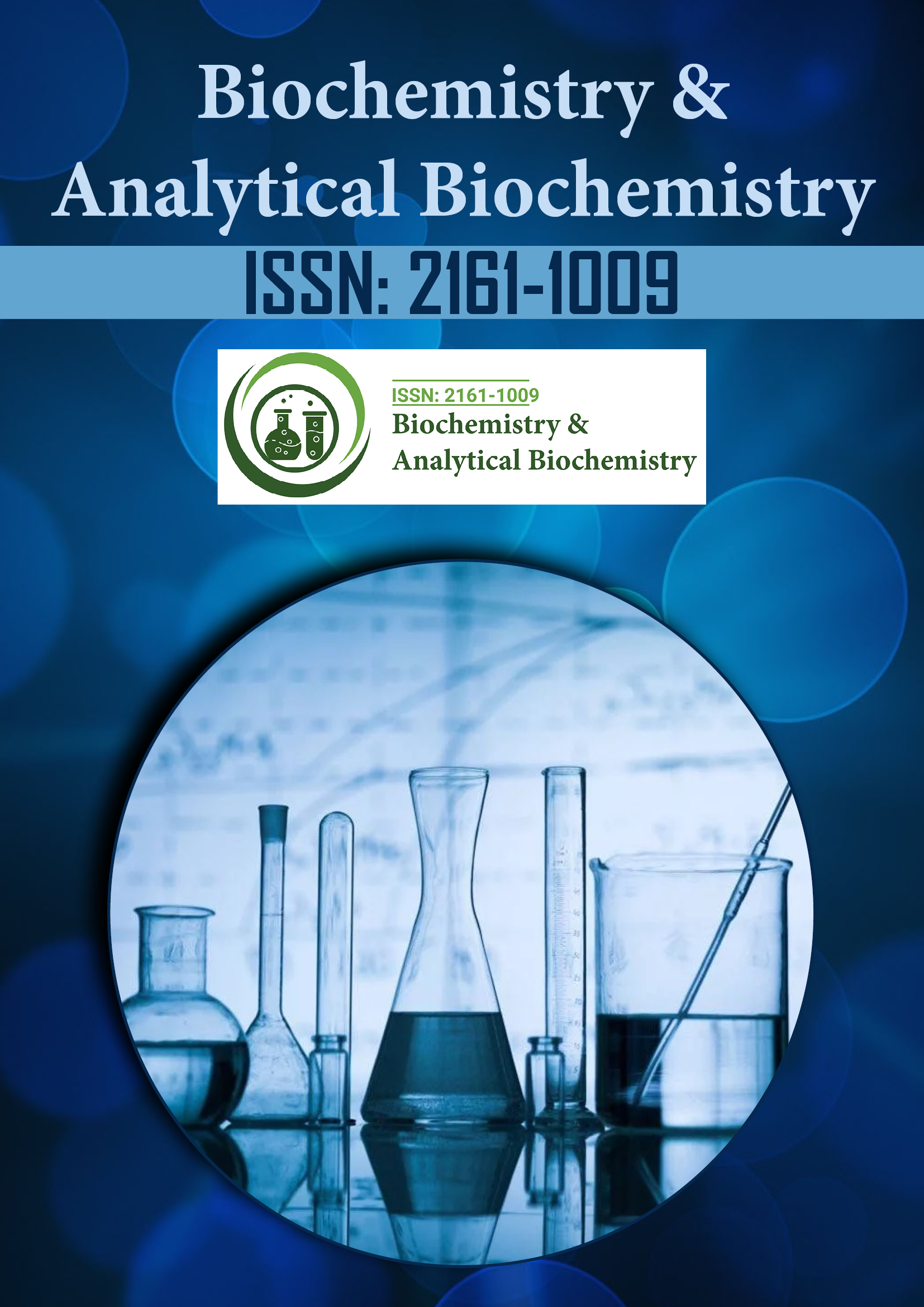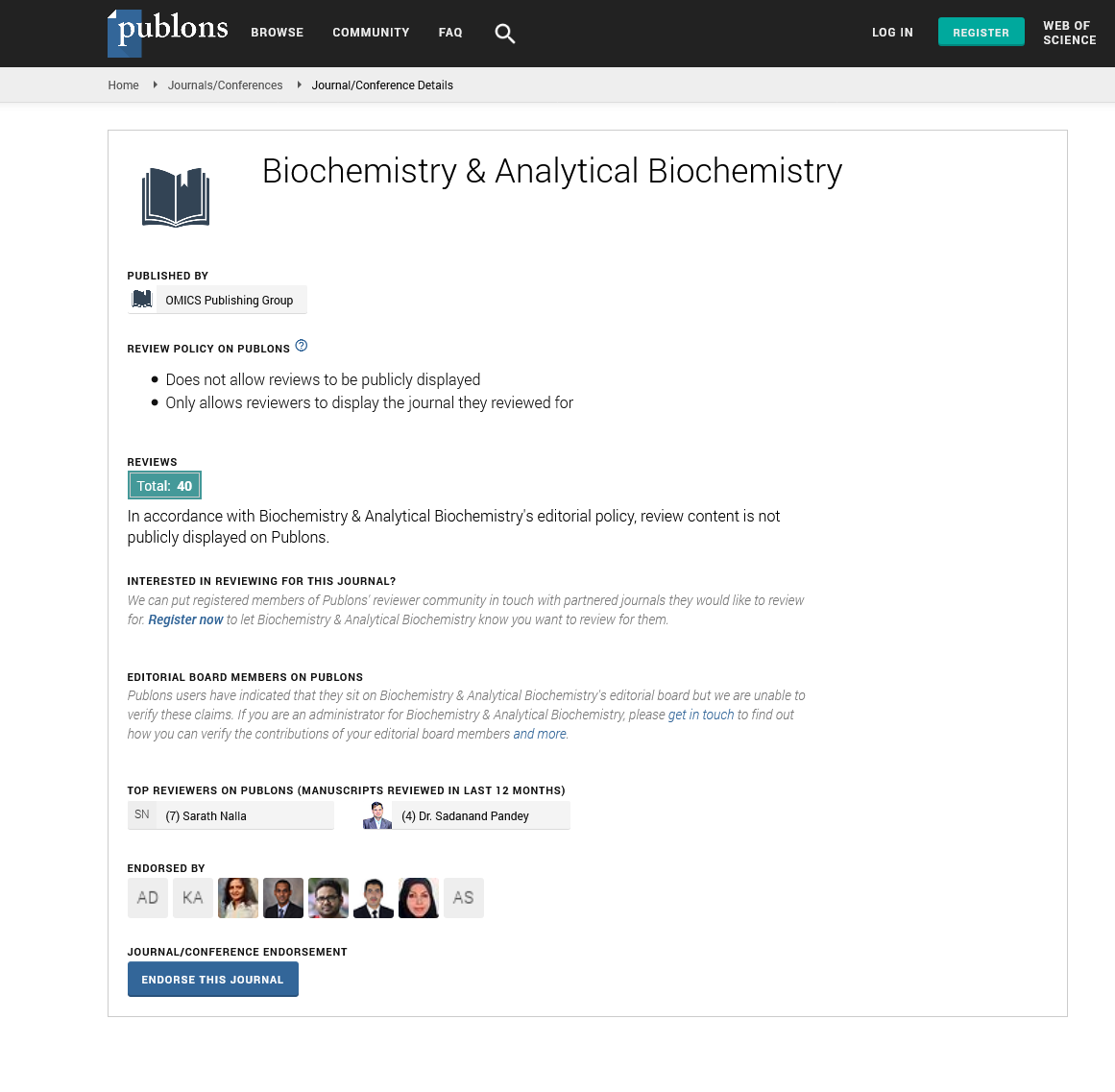Indexed In
- Open J Gate
- Genamics JournalSeek
- ResearchBible
- RefSeek
- Directory of Research Journal Indexing (DRJI)
- Hamdard University
- EBSCO A-Z
- OCLC- WorldCat
- Scholarsteer
- Publons
- MIAR
- Euro Pub
- Google Scholar
Useful Links
Share This Page
Journal Flyer

Open Access Journals
- Agri and Aquaculture
- Biochemistry
- Bioinformatics & Systems Biology
- Business & Management
- Chemistry
- Clinical Sciences
- Engineering
- Food & Nutrition
- General Science
- Genetics & Molecular Biology
- Immunology & Microbiology
- Medical Sciences
- Neuroscience & Psychology
- Nursing & Health Care
- Pharmaceutical Sciences
Opinion Article - (2025) Volume 14, Issue 2
Advances in Metabolomics: Unraveling the Chemical Signatures of Life
Hiroshi Tanaka*Received: 30-May-2025, Manuscript No. BABCR-25-29501; Editor assigned: 02-Jun-2025, Pre QC No. BABCR-25-29501 (PQ); Reviewed: 16-Jun-2025, QC No. BABCR-25-29501; Revised: 23-Jun-2025, Manuscript No. BABCR-25-29501 (R); Published: 30-Jun-2025, DOI: 10.35248/2161-1009.25.14.585
Description
Metabolomics has emerged as a transformative field in the life sciences, offering unparalleled insights into the chemical underpinnings of biological systems. By studying the complete set of metabolites within a cell, tissue, or organism, metabolomics provides a snapshot of biochemical activity that reflects both genetic programming and environmental influences. Unlike genomics and proteomics, which focus on static or semi-static entities, metabolomics captures the dynamic and responsive nature of metabolism, making it a valuable tool for understanding health, disease, and therapeutic interventions.
The central principle of metabolomics lies in the comprehensive identification and quantification of metabolites, which are the small molecules involved in metabolic pathways. These molecules, ranging from amino acids and sugars to lipids and nucleotides, provide critical information about cellular processes. The metabolome, unlike the genome, is highly sensitive to external conditions such as diet, stress, toxins, and lifestyle factors. This sensitivity makes metabolomics particularly useful in fields such as personalized medicine, nutrition, toxicology, and environmental science.
Advances in analytical biochemistry have been the driving force behind the rapid growth of metabolomics. Techniques such as nuclear magnetic resonance spectroscopy, mass spectrometry, and chromatography-based methods enable researchers to detect and quantify thousands of metabolites simultaneously. These tools not only provide high-resolution data but also integrate with computational approaches to map metabolic networks and identify biomarkers of disease. For example, metabolomic studies have revealed specific lipid and amino acid profiles associated with diabetes, cancer, cardiovascular disorders, and neurodegenerative diseases. One of the most exciting applications of metabolomics is in the realm of precision medicine. By analyzing the unique metabolic fingerprints of individuals, clinicians can tailor treatments to patien
Citation: Tanaka H (2025). Advances in Metabolomics: Unraveling the Chemical Signatures of Life. Biochem Anal Biochem. 14:585.
Copyright: © 2025 Tanaka H. This is an open access article distributed under the terms of the Creative Commons Attribution License, which permits unrestricted use, distribution, and reproduction in any medium, provided the original author and source are credited.

